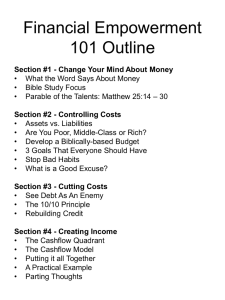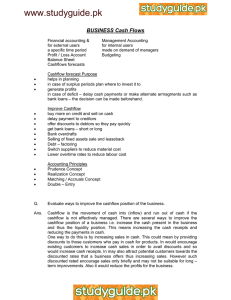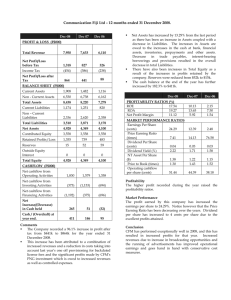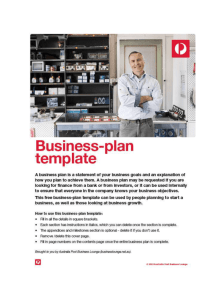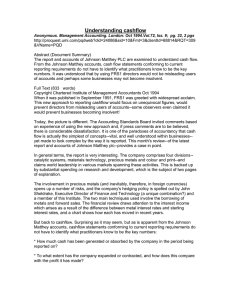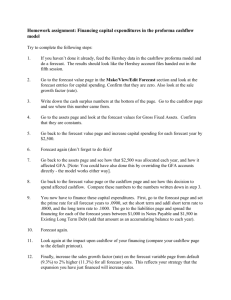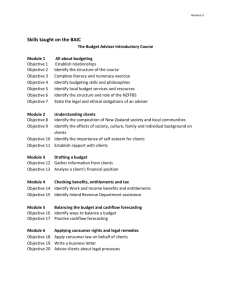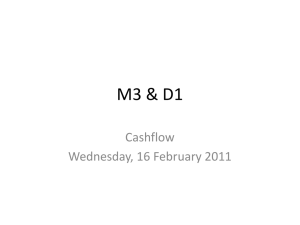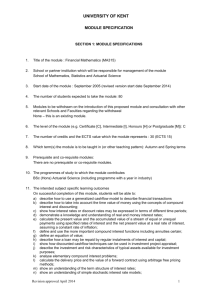Cashflow management: the basics
advertisement
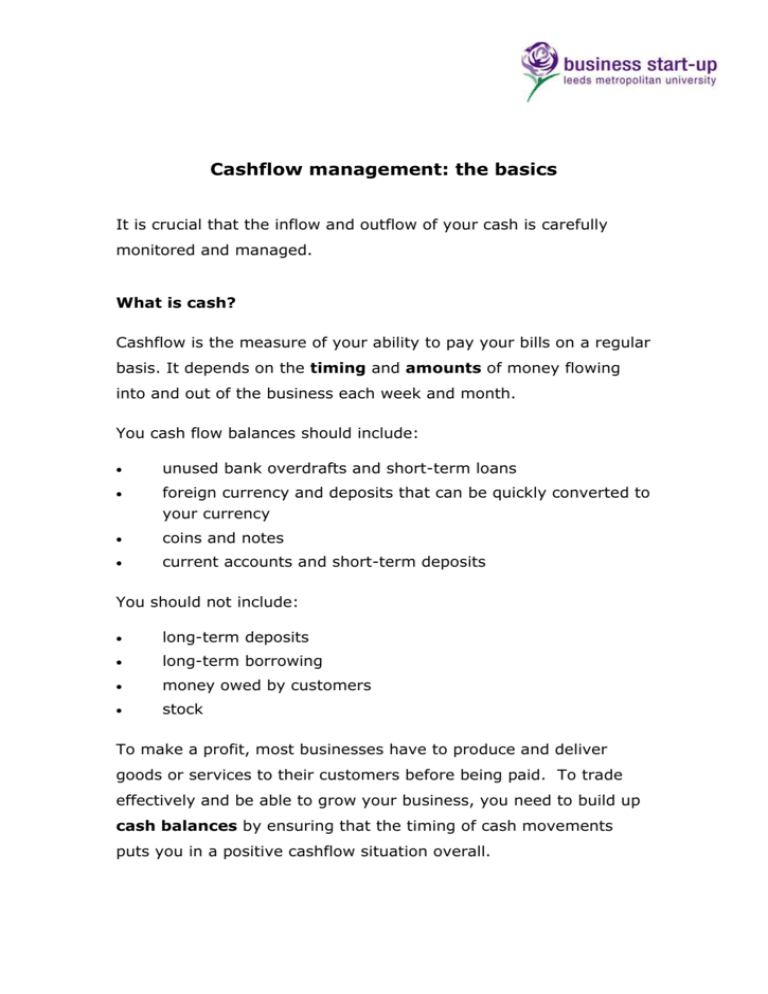
Cashflow management: the basics It is crucial that the inflow and outflow of your cash is carefully monitored and managed. What is cash? Cashflow is the measure of your ability to pay your bills on a regular basis. It depends on the timing and amounts of money flowing into and out of the business each week and month. You cash flow balances should include: unused bank overdrafts and short-term loans foreign currency and deposits that can be quickly converted to your currency coins and notes current accounts and short-term deposits You should not include: long-term deposits long-term borrowing money owed by customers stock To make a profit, most businesses have to produce and deliver goods or services to their customers before being paid. To trade effectively and be able to grow your business, you need to build up cash balances by ensuring that the timing of cash movements puts you in a positive cashflow situation overall. Having a lot of cash in your bank does not necessarily make good business sense. If you do not need to use it immediately, put spare cash into an account where it will earn a high rate of interest, Get advice from your bank, accountant or financial adviser. Difference between cash and profit Profit is the difference between the total amount your business earns and all of its costs, usually assessed over a year or other trading period. You may be able to forecast a good profit for the year, yet still face times when you are strapped for cash. Cash inflows and cash outflows Ideally, during the business cycle, you will have more money flowing in than flowing out. This will allow you to build up cash balances which can be used to fill cashflow gaps. You should aim must to speed up the inflows and slow down the outflows. Cash inflows payment for goods and services from your customers receipt of a bank loan interest on savings and investments shareholder investments increased bank overdrafts or loans Cash outflows purchase of stock, raw materials or tools wages, rents and daily operating expenses purchase of fixed assets - PCs, machinery, office furniture, etc loan repayments dividend payments income tax, corporation tax, VAT and other taxes reduced overdraft facilities Many of your regular cash outflows, such as salaries, loan repayments and tax, have to be made on fixed dates. You must always be in a position to meet these payments in order to avoid large fines or a disgruntled workforce. To improve everyday cashflow you can: ask your customers to pay sooner chase debts promptly ask for extended credit terms with suppliers order less stock but more often lease rather than buy equipment improve profitability You can also improve cashflow by increasing borrowing, or putting more money into the business. This is suitable for coping with short-term downturns or to fund growth in line with your business plan, but shouldn't form the basis of your cash strategy. The principles of cashflow forecasting Cashflow forecasting enables you to predict peaks and troughs in your cash balance. It helps you to plan borrowing and tells you how much surplus cash you're likely to have at a given time. Many banks require forecasts before considering a loan. What to include in your cashflow forecast The cashflow forecast identifies the sources and amounts of cash coming into your business and the destinations and amounts of cash going out over a given period. There are normally two columns listing forecast and actual amounts respectively. See our cash flow template. The forecast is usually done for a year or quarter in advance and divided into weeks or months. In extremely difficult cashflow situations a daily cashflow forecast might be helpful. receipts payments excess of receipts over payments - with negative figures shown in brackets opening bank balance closing bank balance It is important to base initial sales forecasts on realistic estimates Manage income and expenditure Effective cashflow management is as critical to business survival as providing services or products. Below are some of the key methods to help reduce the time gap between expenditure and receipt of income. Customer management Clearly outline your standard payment terms.. Issue invoices promptly and regularly chase outstanding payments. Cashflow problems and how to avoid them No matter how effective your negotiations with customers and suppliers, poor business practices can put your cashflow at risk. Look out for: Poor credit controls Ineffective marketing Inefficient ordering service – make it easy to use Poor management accounting Inadequate supplier management - your suppliers may be overcharging, or taking too long to deliver.
